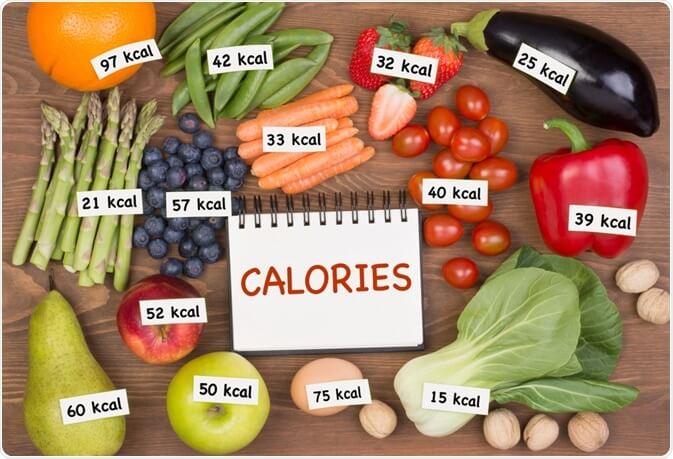Reading Time: 4 minutes

Calories are typically the focus of any weight loss diet, but just how many calories do you need to lose weight? And is a weight loss diet really as simple as cutting calories?
The standard rule of thumb is that if you eat more calories than you burn in a day, you will gain weight. If you consume fewer calories than your body needs to function in a day, you will lose weight. And if the number of calories you consume and the calories you burn are about equal, your weight will remain about the same. The standard recommendation for healthy adults is to consume 2,000 calories per day.
This broad rule of suggested calories for weight loss, however, does not take health and lifestyle into consideration. The more active you are, the more calories your body needs to function. But if your lifestyle is sedentary, with little regular exercise, your daily calorie requirement is much less.
In addition, there are definite pros and cons to focusing all your attention on calories for weight loss. For example, an intense focus on counting the calories of every meal you eat can be a slippery slope toward disordered eating. If you have a history of disordered eating, a weight-loss diet focused on calories may not be the healthiest option for you. On the other hand, for many people, tracking food and calories is helpful for staying on track with weight loss goals.
So just how many calories should you be eating each day? Let’s break down the general 2,000 calories-per-day rule into more specific terms, step-by-step.
Step 1: Determine the basal metabolic rate (BMR)
Your BMR is the minimum number of calories your body burns when it is at rest. This is the required number of calories your body needs for basic functions of life, such as breathing, regulating temperature, digesting food, etc. If you were to do nothing but stay in bed all day, this is how many calories your body needs to stay alive. There are variations of the equation used to determine BMR, but one common equation is the Mifflin-St. Jeor equation to estimate BMR. The equation for women looks like this: (10 x your weight in kilograms) + (6.25 x your height in centimeters) – (5 x your age in years) – 161. The BMR equation for men is as follows: (10 x your weight in kilograms) + (6.25 x your height in centimeters) – (5 x your age in years) + 5 The resulting number may not be your exact BMR, which can only be determined in a lab, but gives a general idea of just how many calories your body needs to function at rest.Step 2: Calculate activity
Now that you’ve determined your BMR, it’s time to take into account any physical activity you do in a day, from normal walks to your evening exercise class. Using a calorie calculator can help you determine how many calories you need on a daily basis by taking your BMR and activity level into account. There are 3,500 calories in one pound, so to lose weight at a rate of one pound per week, you’ll need to create a deficit of 500 calories per day. This formula should be used as a guide to determine calories for weight loss, but there are other factors that may affect how quickly you lose weight, including metabolism and muscle mass. Any calorie counter that takes activity into account may define activity levels as low (sedentary), moderately active, or active. Sedentary — If your lifestyle is more sedentary and you aren’t typically active outside of work, your daily caloric needs will be less than that of someone who is more active. A sedentary woman needs about 13 calories per pound of body weight to maintain her weight. A sedentary man needs about 15 calories per pound of body weight. To lose weight, you’ll need to cut calories. Keep in mind that a sedentary lifestyle isn’t healthy for anyone, and increasing your activity level by just a few minutes a day can help reduce your risk of obesity, diabetes and heart disease. The American Heart Association recommends adults get at least 150 minutes of moderately intense exercise each week. Moderately active — If you are moderately active, you walk the equivalent of 1.5 to three miles per day at a rate of three to four miles per hour, or get about 30 to 45 minutes of moderately intense exercise (such as brisk walking) daily. A woman who is moderately active needs about 15 calories per pound of body weight to maintain weight, while a moderately active man needs about 17 calories per pound of body weight. Active — An active lifestyle is typically considered getting 60 minutes of moderately intense exercise each day. Active women need about 17 calories per pound of body weight each day to maintain their body weight. Active men need about 18 calories per pound of body weight. The above recommendations are general guidelines to maintain your body weight. To lose weight, you must create a calorie deficit, either by consuming fewer calories or increasing activity levels. If you are overweight and trying to lose weight, create a calorie deficit of 500 to 1,000 calories per day to lose weight at a rate of one pound per week. If weight loss is your goal, your healthcare provider or weight loss doctor can help determine your specific caloric needs, recommend the best foods for weight loss and help you set goals to achieve weight loss. Contact the weight loss doctors at First Baptist Medical Center today to learn more about weight loss options to help you reach your goal weight and improve your health.





